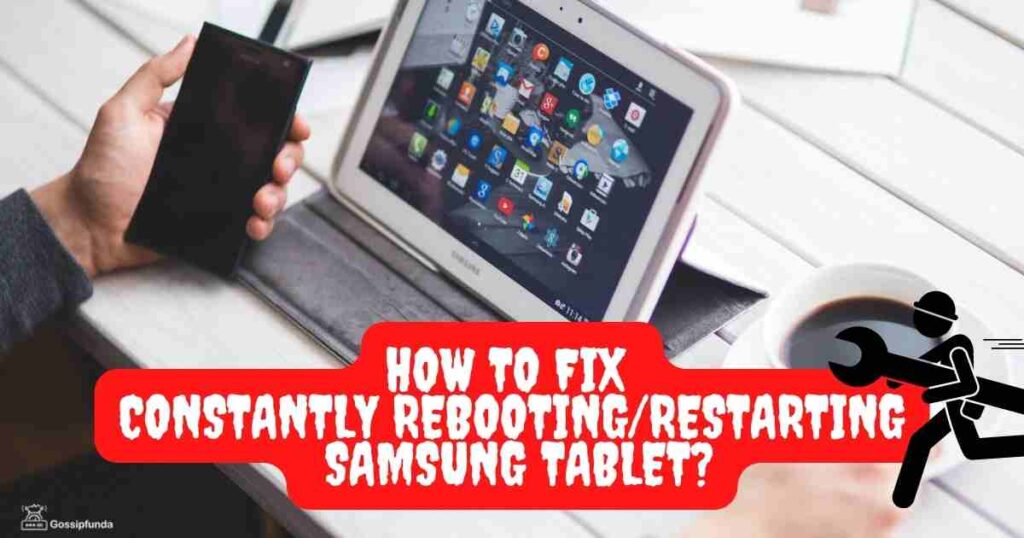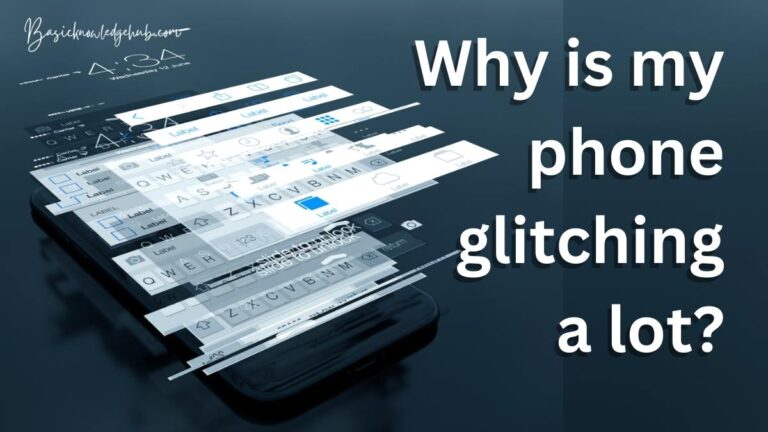How to fix constantly rebooting/restarting Samsung tablet?
Do all your Samsung android tablets also have a problem with continuous rebooting or restarting? 3rd -party apps can trigger your tablet or smartphone to reboot at odd or regularly. To resolve the issue, see how to fix constantly rebooting/restarting Samsung tablets. To see if a new app is causing the problem, run a firmware upgrade, factory reset, or boot into Safe mode.
The Samsung’s Galaxy Tab, whether it’s the Samsung Tab 2, Samsung Tab 3, or any other size version, has been one of the greatest Android-based tablet options available. However, even the Samsung Galaxy Tab has its greater share of troubles and problems, with the reboot loop becoming one of the most prominent.
If the Samsung Galaxy Tab A continues restarting unexpectedly, a malfunctioning battery is the first thing to look for. To do so, you’ll need to adjust the operating system and the device battery. This is a simple process that may assist you in resolving this particular issue.
Any model or type of the Samsung Galaxy Tablet can become caught in a reboot cycle, in which the device continuously powers off and on after what seemed like an eternity.
But don’t worry; this problem can be easily resolved. The following remedies have been shown to resolve the Samsung Galaxy Tablet reboot issue.

Quick Fix way 1(Via Charging)
(While the gadget is turned off, make sure to charge it to 100 percent.)
- As strange as it may sound, the actions below have cured the Samsung Galaxy Tablet reboot continuous loop underlying issue for a huge number of people throughout the world.
- Just connect the Galaxy Tablet’s battery charger to an electrical outlet before connecting the tablet to the Android charger while it reboots.
- The gadget will power off if you press down and power the button for somewhere between 6 and 10 seconds.
- Instead of resuming, the device’s user can view a ‘battery charging’ indicator when it comes back to life after being turned off.
- Then gradually allow the Galaxy Tablet to reach 100 percent charge.
- When the tablet is fully charged, remove that one from the battery charger and turn it on again; the android tablet will no longer be trapped in a reboot cycle.
Quick Fix way 2(reboot)
(Make sure to delete the device’s large cache completely and totally.)
1. First of all, turn off the Samsung Galaxy Tablet.
2. Tap and hold the overall volume Up and Power keys concurrently till the Samsung logo shows after the tablet has closed down. ASR Android System Recovery option will be activated on the Samsung Galaxy Tablet.
Note on a tip: If the problem is with the system or laptop/notebook, use Restore Repair to examine the archives and fix any damaged or absent files. It also works in many cases where a control system flaw causes the defect.
3. To choose the ‘wipe cache partition’ choice, just use the volume (rocker) to mark it and the Power button to choose it.
4. When the large cache on the Samsung Galaxy Tablet device has indeed been successfully deleted, go to the main screen menu and select ‘reboot system now to relaunch the tablet device.
Quick Fix way 3(wipe data/ factory reset)
(Restore the Samsung tablet device to its default settings.)
- If everything else fails to work, the following procedure should be used as a final resort.
- Just power off your Samsung tablet device and then reboot it to recovery mode using the steps mentioned below.
- Just use the volume level rocker to indicate the ‘wipe data/ factory reset’ choice in Repair Mode, then press the Power switch to choose it.
- Mark and accept the ‘Yes – delete all client actual data’ option available upon the next screen.
- Watch for the product’s factory configuration to be restored.
- Select ‘reboot system immediately’ from the Rescue Mode option to restart the gadget into the Android Operating system once restored.
Quick Fix way 4(Via ODIN)
(Demote Android software)
You might try downgrading your Android operating system to see if that solves the problem for you. You can do so by downloading the latest ODIN from their main website and flashing an earlier Android operating system using it.
This works in many cases where a system flaw causes the problem.
Even if none of the above methods and techniques have worked, we propose utilizing the Restore Recovery Software, which can collect and analyze the repositories and repair totally corrupt and completely missing files. This works perfectly in most cases where a system flaw causes the problem. Restore also tends to maximize the overall efficiency of your system.
Quick Fix way 5(Overheating)
(Check for overheating)
Your Galaxy Android Tablet may be getting too hot if it usually keeps restarting and feels excessively warm to the touch. An Android smartphone is designed to switch off on its own to safeguard the system from excessive interior temperatures. If your tablet device randomly restarts after a long period of use, it’s most likely due to overheating. In this scenario, you must wait at least 30 minutes for the gadget to cool down before using it again.
If your Samsung Galaxy Tab keeps heating, it could be a sign of a more serious issue. You should concentrate your debugging efforts on resolving the heating issue first.
Quick Fix way 6(Via troubleshooting)
( Run troubleshooting in your application.)
Although there are a few options, you may repair your Samsung Galaxy Tab if it only reboots when you try your tablet device to load or use a specific program. First, attempt to impose the app to close. This is helpful in the event of small issues. The two approaches for forcing an app for android to stop are as follows:
Option 1: Close all the applications running in the background with the help of the recent app function.
Click the Previous Apps soft key on your screen display (on the left area of the Home center button).
Slide either left or right to find the application software once the Previous Applications screen appears. If you could operate it earlier, it ought to be here.
Then, to finally close the app for android, slide up. This should also compel it to close. If it isn’t there, keep tapping the relatively close All application to restore all apps simultaneously.
Option 2: Close an application software by using the application info menu.
Another technique to force an application to stop is to go into the app’s settings. It takes a bit more time than the first technique we used, but it’s just as effective. You should utilize this technique if you wish to undertake other debugging for the app, such as cleaning its large cache or data collected.
Here’s how you do it:
- Open the “Settings” application.
- Then navigate to apps and select them.
- Select More settings from the menu (three-dot button, top right).
- Show control system applications are chosen.
- Locate and launch the app.
- Then tap the Force Stop button over there.
- If rebooting the app does not resolve the issue and your Samsung Galaxy Tab A continues to reboot, the next step is to erase the application’s large cache. This will clear the cache of something like the app in question, possibly resolving the issue.
This is how you do it:
- Return to the main menu.
- Select the Apps icon.
- Then navigate to Settings and choose the “Settings” application.
- Select Applications.
- Tap More alternatives in the upper right corner if you’re searching for just a control system or standard app (three-dot icon).
- Then go with Show system applications.
- Tap a Camera when you find it.
- Storage with a tap.
- To clear the cache, tap the Clear Cache button.
- Look for the issue.
Quick Fix way 7(Bad Application)
( Have a check for the bad application)
A faulty third-party app can sometimes just cause unexpected restart issues. To see if this is the case, put your tablet in safe mode and see what happens. If it functions normally but won’t resume in standby mode for a long time, it’s possible that an application is to blame. The malicious app must then be isolated and removed from the system.
To use the Safe version on your Samsung Galaxy Tab, follow these steps:
- Turn the gadget off.
- Keep the Power key pressed and held.
- Simply release the On key when Samsung comes on the screen.
- Tap and hold the Sound down key shortly after leaving the Power key.
- Keep the Sound down key pressed until the gadget restarts completely. It could take up to a minute. So just be sure while you wait.
- When the device enters Safe Mode, release the Sound down key.
- Third-party applications are not present in this mode; therefore, you’ll have to rely on programs that were installed earlier. Uninstall the software you installed a few minutes ago to see if that solves the problem. If the problem persists, use the elimination solution to get the rogue software.
Here’s how to perform it smoothly :
- Start the computer in safe mode.
- Look for the source of the issue.
- You can start deleting apps one by one once you have ensured that a third-party program is at fault. We suggest initiating with some of the newest stuff you added.
- After you have disabled an app, go back to the regular point and look for the matter.
- Repeat steps 1-4 if your Samsung Galaxy Tab A still stops working in regular mode but functions in safe mode.
To back to a full mode or switch off safe mode, follow these steps:
- Keep the Power key pressed and held.
- Restart by pressing the Restart button.
- The gadgets return to regular operation.
With the help of the “Settings” menu to perform a hard reset on the Samsung’s Galaxy Tablet
- Under the ordinary condition, the hard reset option in the Options menu should be your prior choice. It’s easier to perform and eliminates the need to hit hardware keys, which some users might find challenging.
- Duplicate all your things and then finally trash your Google personal account.
- Initiate the Settings application.
- Slide down to General management and disclose it.
- Restart by pressing the Reset button.
- Go with Factory data reset choice from the visible drop-down menu.
- To continue, read the things and afterward tap Reset.
- To confirm the operation, select Delete All.
How to use the physical buttons on the Samsung’s Galaxy tablet A to perform a factory reset
This method is beneficial if your android tablet is not preparing to launch or initialize, but the Settings menu is unreachable. To begin, boot the device into Recovery Mode. You can initiate the correct master reset process when you have successfully got Recovery. It may take a few attempts for you to acquire access to Recovery, so be calm and try again.
Make a backup of any private information ahead of time if possible. If you cannot do so due to an issue, please leave this step.
Also, be sure that your Google account is disabled.
If you cannot do so due to any other kind of issue, please ignore this method.
- Turn the gadget off. This is crucial. You’ll never be in a situation to enable Recovery Mode if you don’t switch it off. Wait until the device’s battery is fully charged and depleted if you cannot turn it off using the Power switch frequently. Then, before going into Recovery Mode, recharge the battery for 30 minutes.
- For 5 seconds, press and hold the Voice Up and Power buttons simultaneously.
- Release your volume Up and Power keys.
- The menu for the Restoration screen will now display.
- Using the Volume Down key, scroll down until you see ‘Wipe data/factory reset.’
- Select the ‘Wipe data/factory reset option by pressing down the Power key.
- Select volume down key to mark yes.
- Then to confirm factory reset, tap the button.
- Relaunching at random or regularly can indicate a more serious technical problem. If the problem persists after a factory reset, take it to a Samsung store or repair shop near you.



